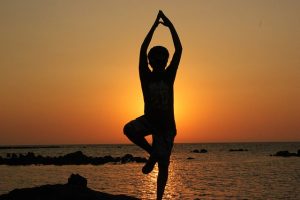DNA and Epigenetics–Short Recap from Article
We inherit one strand of DNA from each side of our family. DNA is the basic building block of our human body and mind. It is the internal micro-cellular structure from which we develop. We used to think of DNA We used to think that DNA controlled many of our traits that could not be changed.
Science then delved deeper into the cellular structure and discovered epigenetics. Instead of being fixed, DNA was just the building block of our genetic components and epigenetics were the mechanisms allow us to choose which one of the gene we want to trigger or ‘express’ during our lifetime.
What does this mean? Epigenetics revealed that DNA is our basic hardware and epigenetics is the software program the operator chooses to run daily during living. We can turn off and on whatever genes we want. The complexities of the genetic traits have just started being explored since we have trillions of cells with epigenetic switches that turn off and on in sequences that create cascades of effects science is just beginning to understand.
Our DNA strands live in the nucleus of our cells, primarily in the mitochondria (the fuel center). All we input into our bodies is translated into chemical reactions to use as fuel to build cellular material for our organs and energy systems including our emotions. By keeping our bodies, minds, emotions and spirits healthy we keep our DNA in prime shape for ourselves, our families and our descendants. In this series of articles, I will address some simple ways we can keep the triggers of genetic expression in the ‘positive’ mode.
EXTERNAL ACTIONS TO CLEAR GENETIC TRIGGERS
Exercise–our bodies were made to move
Most people in the West in modern life are sedentary. We work in offices, factories, or at jobs that require little to no aerobic activity. We drive home at night and watch TV, play computer games, check our Facebook, Instagram, Twitter, Pintrest or other computer accounts. We are then surprised when our bodies don’t respond with health and vitality.
Babies and children naturally are active most of the day. They constantly are moving, kicking, crawling and exploring, stretching their muscles and limbs as they grow. We all have watched a bunch of two-year-olds and thought, ‘If only I could bottle all that energy for me to use” because they seem to have a boundless supply. Children are constantly in motion until it is time to sleep then they sleep deeply and well because their bodies are ready for rest. Many adults complain of difficultly sleeping, generally because of a lack of sufficient activity.
Our bodies need activities to maintain our normal DNA health.
Yoga–long-term yoga practice has been shown to repair DNA. That’s right, not just enhance the good stuff, but to actually fix genes that may have been compromised in the past. Multiple studies have confirmed this result over the last 20 years. This doesn’t mean taking  one yoga class will do it. A sustained practice of yoga, Tai Chi, Qigong or other mindful movement that balance mind and body have preventative as well as repairing effects on genetic health issues.
one yoga class will do it. A sustained practice of yoga, Tai Chi, Qigong or other mindful movement that balance mind and body have preventative as well as repairing effects on genetic health issues.
30 minutes of exercise like walking 3 times a week has reversed the effects of heart disease. Aerobic exercise of any type will increase circulation, stimulate oxygen and blood flow to the brain and heart, and improve energy. Although our brain is only 2% of our body’s mass, it uses 20% of the blood flow and oxygen supply. This will also help stave off dementia and Alzheimer’s disease.
Dancing is great exercise since it not only gives us aerobic activity, it increases hand-eye coordination; rhythm, beat and sound are stimulation for the ear and involves brain stimulation while you learn new steps and social skills by interacting with others.
Walking in nature 3 times a week has been found to be more effective for relieving clinical depression than any medication. Green is a soothing color for the eyes and mind.  The sights and sounds of nature around us tend to soothe our over-active minds with the regularity of our steps. Our bodies are adapted for outdoor living, not the confinement of the indoors. Breathing fresh air refreshes our lungs (try to walk in a park with trees, grass and flowers).
The sights and sounds of nature around us tend to soothe our over-active minds with the regularity of our steps. Our bodies are adapted for outdoor living, not the confinement of the indoors. Breathing fresh air refreshes our lungs (try to walk in a park with trees, grass and flowers).
Swimming is terrific exercise for those with joint issues. It involves whole body movement, strengthens heart and muscles, increases lung capacity and the oxygenation of the blood supply. Look for a saltwater pool and try to avoid chlorinated water. Best of all, swim in a safe area of a lake or ocean with a lifeguard.
Hiking and bicycling are great exercises and can be done almost everywhere. Most cities now have parks or recreation areas nearby where hiking and biking areas are specifically set aside for families and sports enthusiasts. Cities and corporations are getting the message that healthy and happy citizens and employees are more productive and cost less than ones suffering from chronic illness and dis-ease.
Exercise is best if you do it regularly and incorporate it into your lifestyle. Find something you enjoy doing and include your whole family. You are more likely to continue exercising in the long term if you enjoy it and there is a social component.
Look for the other three tips other articles.
Blessings for peace, prosperity, joy and love,
Ariann

